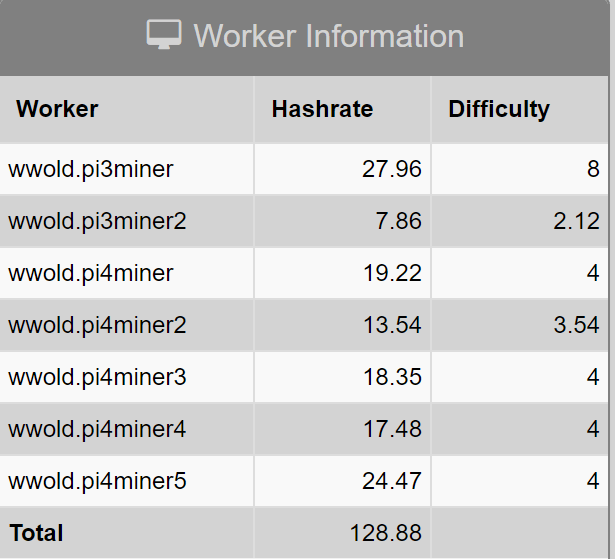I finally found a coin to mine on the Raspberry Pi
I’ve been mining Monero for the last year or so using extra CPU power from my servers or other computers I had lying around. These efforts by no means make any monetary difference but since I did not invest in anything, I am not worried about ROI. I look from time to time for anything that a Raspberry Pi can mine since I typically keep a few lying around for projects. Not sure how I had missed it but I recently came across Coin Magi.
Coin Magi is a CPU mine-able coin that performs rather well on Raspberry Pi’s. I am using Raspberry PI 4 4GB models in my setup but I would imagine that the 1GB or 2GB would perform similarly for this task.
Initial Setup
Begin by installing the base OS. I am using the current Raspbian Buster Lite version so I know that it works. If you have a particular flavor you like you can try but I only attempted the official Raspberry image.
Once you have flashed you OS, go ahead and place it into your Pi and power up. This guide assumes you are either working directly with the Pi via keyboard and monitor or have otherwise setup SSH for remote administration. There are already plenty of guides on the web for both.
Once you are booted, run through the rest of the typical setup (raspi-config) and update (apt-get update, apt-get upgrade) commands rebooting if necessary. Don’t forget to set up individual hostnames if you run multiple Pi’s on your network.
Overclock (optional)
I normally do not mess with this but I wanted to see if I could push a little extra out of my PI’s as mining is the sole purpose for this project. When you are updated and rebooted, go ahead and enter sudo nano /boot/config.txt to add a couple of lines. Always start small and increase to see what your hardware can and cannot do. Add the following lines below the [Pi] section:
over_voltage=2
arm_freq=1750
Save and exit the editor then reboot.
Miner software
I played around with a couple of miners before stumbling upon this git for piminer. Not only does this work, jeez made it into a super easy install script. Follow the instructions on the git page and then stop before running the miner itself as you will need to edit the startup script.
wget https://raw.githubusercontent.com/jeezz/piminer/master/piminer-install.sh chmod +x piminer-install.sh ./piminer-install.sh
Choose your pool
YMMV but I chose to use https://pom.m-hash.com as my mining pool. Set up was simple and I was mining within a few minutes. Create your account the create your worker. You will need a wallet and this may vary depending on the OS you choose to run it on. I set up one on a Ubuntu VM I already had running. Be warned, it takes hours for the block-chain to synchronize so do not be discouraged.
Once you have your wallet address, your ID, and your worker names/passwords you can edit the startup file for the miner:
cd /piminer/m-cpuminer-v2 nano piminer-start.sh
Once in the editor you will update your pool address (mining.m-hash.com:3334 if you used my suggestion), your ID:workername, and worker password. Save and exit then start mining with:
./piminer-start.sh
Happy mining. Here is a snapshot of my miners at work. The list consists of an Ubuntu VM, a Pi3 B+, and 5 Pi 4’s.

If you know of any other Raspberry Pi mine-able coins, leave a comment or drop me an email.
